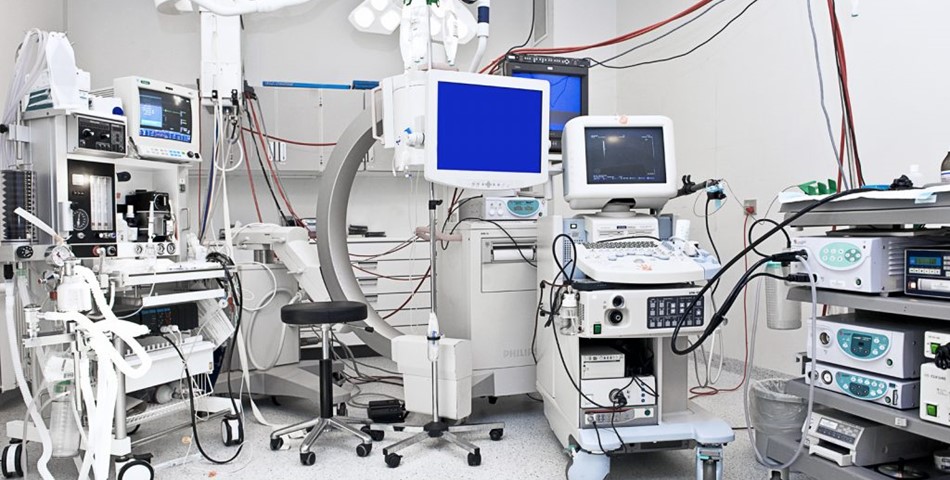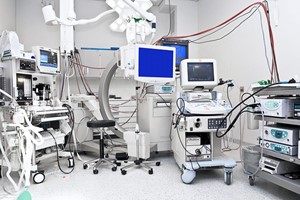The pediatric medical devices market is expected projected to reach US$ 48,305.21 million in by 2028 from an estimated value of US$ 28,207.65 million in 2021.
The market it is estimated to grow with at a CAGR of 8.0% from during 2021-2028. The rising incidence of cancer and respiratory disorders among children, and availability of a wide range of pediatric medical devices are among the key factors driving the market growth. However, the lack of awareness about medical devices designed for infants hampers the market growth.
Pediatric medical devices are used in the diagnosis and treatment of various medical conditions occurring in children from birth till the age of 21. The medical device innovation demonstrates both the unique needs of children and the challenges of getting to the market a device that meets those requirements.
Designing pediatric medical devices is a challenging task. The designers need to consider the following aspects while designing these devices: children are often more active than adults, their body structures and functions are continuously developing and are different than adults; moreover, they may be long-term users of the devices
The healthcare systems worldwide are continuously evolving due to product innovations and developments. The rise in diseases and disorders among children plays a key role in attracting investments from the global and domestic players into this sector. The trend for pediatric medical devices is likely to grow dramatically in the future, owing to the increasing number of market players offering products.
Moreover, innovative products, revolutionary technology, and successful events have created opportunities for the companies to continue producing pediatric medical devices. In addition, the growing trend of point-of-care devices in hospitals and at-home care is expected to benefit the pediatric medical devices market in the coming years.
The pediatric medical devices market, by product, is segmented into in vitro diagnostic (IVD), cardiology devices, respiratory care, monitoring devices, neonatal ICU devices, others. The in vitro diagnostic (IVD segment is likely to hold the largest share of the market in 2021, and the respiratory care segment is anticipated to register the highest CAGR of 8.6% in the market during the forecast period.
Based on end user, the pediatric medical devices market is segmented into hospitals, pediatric clinics, and others. The hospitals segment is likely to hold the largest share of the market in 2021. Moreover, the pediatric clinics segment is estimated to register the highest CAGR of 8.5% in the market during the forecast period.
The major players in global pediatric medical devices market include Boston Scientific Corporation, Abbott Laboratories, Medtronic plc, Stryker Corporation, Koninklijke Philips N.V., Siemens Healthineers, Johnson & Johnson, GE Healthcare, Cardinal Health and Baxter International, Inc among others.
The key players are now concentrating on implementing strategies such as adopting new technology, product innovations, mergers & acquisitions, joint venture, alliances and partnerships to improve their market position in the global pediatric medical devices industry. In April 2016, Boston Scientific received FDA approval for ImageReady MR-Conditional Pacing System, which includes ACCOLADE MRI and ESSENTIO MRI pacemakers. This has increased the product portfolio of the organization, which helped in gaining the market share
- In September 2019, Abbott Laboratories ABT two life-saving pediatric devices namely, the Masters HP 15mm rotatable mechanical heart valve and the Amplatzer Piccolo Occluder got approved, in Europe. The devices have got the CE Mark, and are now available in Europe and also in other countries that recognize CE Mark.
The product segment is divided into diagnostic imaging devices, cardiology devices, anaesthesia and respiratory care devices, in vitro diagnostic (IVD) devices, telemedicine, monitoring devices, neonatal ICU devices and others. The anaesthesia and respiratory care devices segment is accounted for the highest market share of 24.7% in 2020. This is due to the pediatric respiratory cases due to the unhealthy lifestyle of people.
The end-user segment includes research and academic institutes, hospitals, ambulatory surgery centers, pediatric clinics and others. The hospital segment is accounted to have the highest market value of USD 7.10 Billion in 2020. This is because hospitals have good infrastructure, so people prefer to go to the hospital for checkup and also the increasing number of pediatric hospitals.
The regions analyzed for the market include North America, Europe, South America, Asia Pacific, and the Middle East and Africa. North America is accounted to have the highest market share in 2020 and seems to have the dominance in the forecasting period also. This is because of the fact that a big player of health care market lies in this region, increasing number of pediatric hospitals in the region. The advancement in technologies has come with many state-of-the-art pediatric devices. The parental awareness program, high standards of hospitals in providing services to their patients are some of the factors driving the market in this region. Asia-Pacific is accounted to have the second largest market share in 2020. This is due to the factors like the growing pediatric population in the region and increase in the awareness about the pediatric care. The initiatives taken by many organization like government initiatives for giving incentive to manufacturers, streamlining the regulatory process, parental care and protection for high-risk newborn infants offered by many medical units and also the parental care programs are the factors contributing to market growth in the region. Also the increasing pediatric respiratory conditions like asthma, tuberculosis, cancer etc. are fueling this pediatric medical device market in this region.










